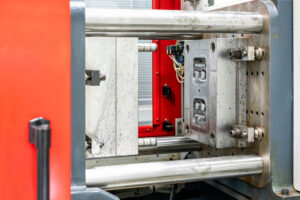Intro
A successful prototype can lead to a successful production of your part. However, this process can be difficult to do. Even if you’ve brought a part to production a few times, it’s important to understand all the pitfalls and potential issues you can run into.
In this guide, our expert manufacturers will teach you tips to go from an idea to final production. Consider these tips so you can save time and money on each new product you’re developing.
Tip 1: Know the Limitations of Manufacturing, and Design for Them

Every machine on the floor of a machine shop has certain limitations. For instance, CNC milling machines are great at making parts out of metal, but they struggle to make perfectly circular and concentric parts. 3D printers are a great option for prototyping, but they’re tough to use for full-scale production.
Knowing how to build your part largely revolves around understanding which manufacturing machinery will be used. To better understand, you can always reach out to a local manufacturer or machine shop.
It’s also important to ensure your part uses design for manufacturing (DFM) best practices. This whole concept entails making parts that are easier and less expensive to make on your manufacturing style of choice.
If you want to DFM for a CNC milling operation, you should stick to nominal hole sizes, standard overall dimensions, and orthogonal holes. These three simple examples can save you a ton of time and money on each part that you make.
Tip 2: Pick the Right Material
Picking the right material will determine whether or not your final part works. To avoid future issues, you’ll want to choose the perfect material for your prototype as well as your production parts — it’s okay if they’re different materials or exactly the same.
Why does material choice matter so much? Certain materials crumple when a small load is applied, others are terrible at handling moisture in the air and will rust out, and other materials can’t be reliably joined together.
In other words, the wrong material can lead to a final part that simply doesn’t work.
A materials engineer or machine shop can also help you with picking the right material for your parts.
Tip 3: Make a High-Quality Prototype
The biggest tip for any production run is to start with a high-quality prototype. A prototype will tell you more than you can imagine.
A well-made prototype can go through a series of mechanical and thermal tests to ensure the part meets design requirements. A prototype can also help you get funding from investors, buy-in from stakeholders, and generate buzz for your product from potential customers.
If your final part will be metal, you can choose to make your prototype out of plastic just to check how the part functionally works.
For parts that must fit within an existing assembly, don’t forget to do a fitment check with the prototype you make.
Prototypes are usually made in very small volumes, often less than 10 units. As a result, you can’t use large-scale production techniques to make your prototype. This is the main reason why you might use a different material between your prototype and final part.
Tip 4: Do Plenty of Tests (Simulated and Real-World)
Testing your part is one way to get meaningful data and feedback. You can run a series of non-destructive tests (NDT) via simulations on 3D CAD, but nothing beats testing a real-world prototype.
If you’re making a bracket that needs to support 20 pounds, you should make a prototype and test it until it fails. This will show you the weak spot of your design and the maximum load it can handle. As a result, you can determine your factor of safety and reinforce certain areas as needed.
Tip 5: Start with a Small Production Run
If you’re making a consumer product, we highly suggest starting with a small production run before you spend money on a full-scale run. Why is this so important? Well, large-scale production runs typically entail injection molding or die casting. Both of these options come with large upfront costs that eventually dissolve as you make lots of parts.
But, what if the market doesn’t react well to your part, you notice a design flaw, or you don’t have the funding today? Smaller production runs via 3D printing, urethane casting, or CNC machining requires a lot less capital upfront and has more design flexibility.
By slowly scaling up production over time, you’ll protect yourself from massive losses of revenue and time.
Conclusion
You just learned 5 useful tips for success during your next production run. Keep these ideas in mind as you take your part from concept to final production. If you need a high-quality machine shop, consider Rapid Axis. We’ve been in business for decades, and we offer full-scale production and prototyping. Allow our team to help you through your production journey. Get a free quote today.

